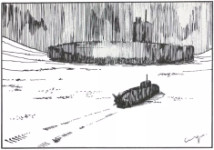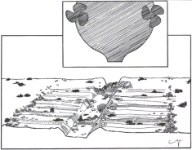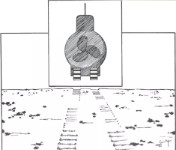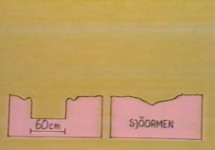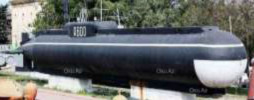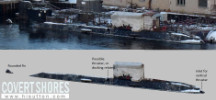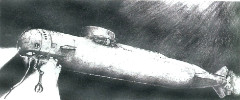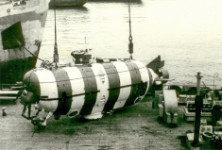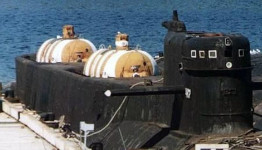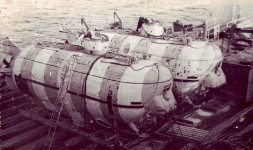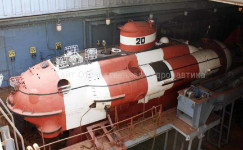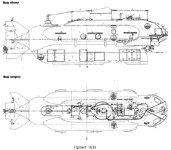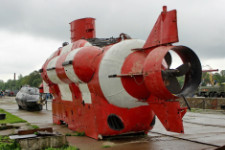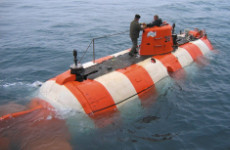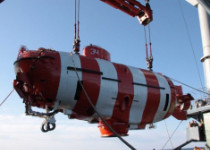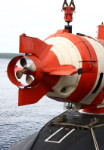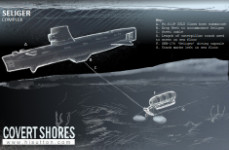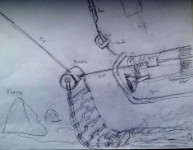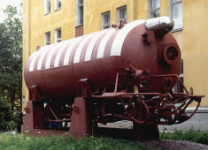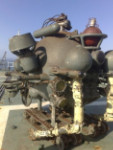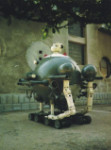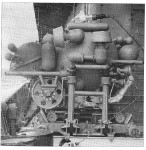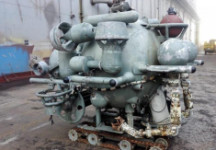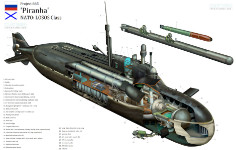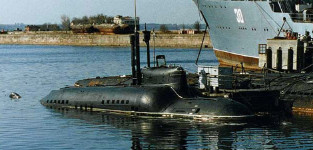
Swedish Naval Intelligence sketch of suspected Soviet tracked midget submarine, 1980s
 Soviet tracked submersibles in Baltic, 1980s
Soviet tracked submersibles in Baltic, 1980s

 A spate of submarine incursions led to the suspicion that the Soviet Navy was operating tracked submersibles in Swedish waters. Track marks were found on the sea floor but the exact submarine(s) responsible has yet to surface. In the 1980s, Mana (Swedish naval intelligence: Marinens Ananlysgrupp) wrote a report which included several sketches of the tracks and hypothetical illustrations of the types of submarines which could have caused them. They suspected that Russian diesel-electric submarines (WHISKEY, FOXTROT and ZULU Classes were among those operated in the Baltic) operated as host submarines for smaller midget submarines and combat swimmers. Some of the midget submarines were believed to be responsible for the parallel track marks.
A spate of submarine incursions led to the suspicion that the Soviet Navy was operating tracked submersibles in Swedish waters. Track marks were found on the sea floor but the exact submarine(s) responsible has yet to surface. In the 1980s, Mana (Swedish naval intelligence: Marinens Ananlysgrupp) wrote a report which included several sketches of the tracks and hypothetical illustrations of the types of submarines which could have caused them. They suspected that Russian diesel-electric submarines (WHISKEY, FOXTROT and ZULU Classes were among those operated in the Baltic) operated as host submarines for smaller midget submarines and combat swimmers. Some of the midget submarines were believed to be responsible for the parallel track marks.
Selected illustrations of the tracks with hypothetical submarines to match them, MANA report, 1980s.
The official sketch is a combination of features from various Soviet submersibles of the time. Most of these classes were not well known (if at all!) outside the defence community so inclusion of these features implies that the author had some access to sensitive intelligence as a point of reference.
CLICK IMAGE FOR HIGH-RESOLUTION:
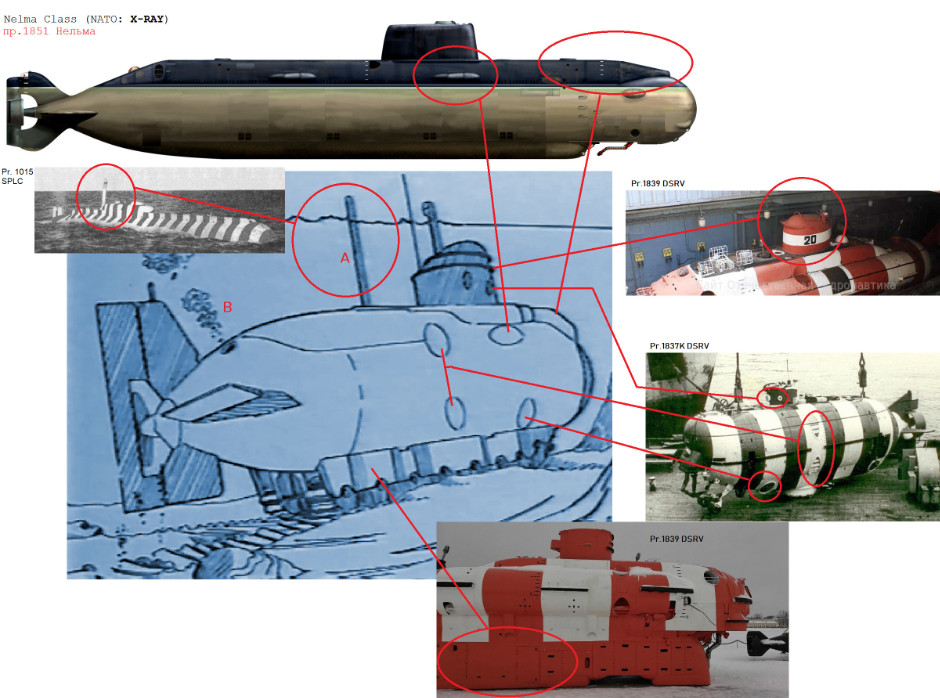
Relevant submarines
CLICK IMAGE FOR HIGH-RESOLUTION:
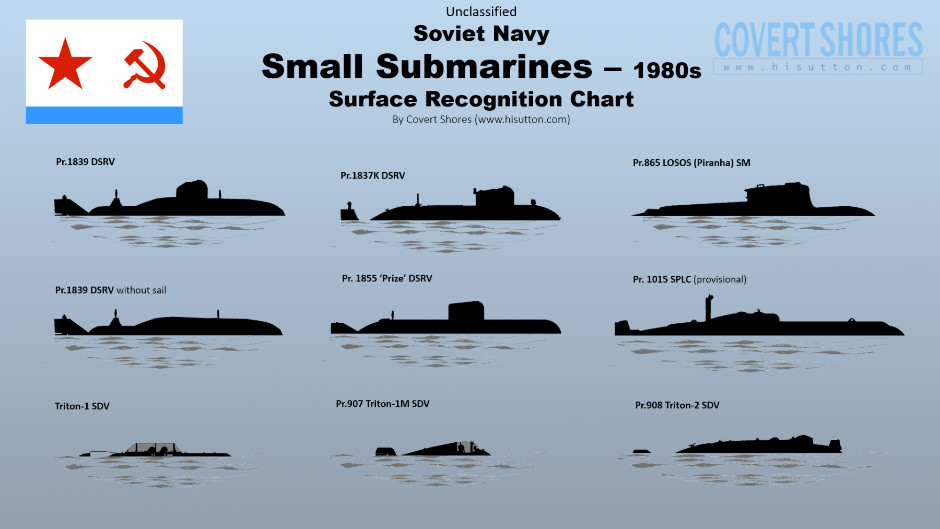
Project 1015 SPLC(Main article)
Very little is known about the 14 meter long X-Craft built by the Soviet Union in the 1970s, and operated through the 1980s. The Project 1015 SPLC (СПЛЦ - Специальные подводные лодки-цели) was in some respects analogous to the British X-Craft midget submarine, being designed primarily to test defenses and act as a target. 9 were built, of which the two based in the Baltic are the least well documented.
Project 1851 X-RAY Class AGS (Main article)
Project 1837K DSRV
Early Deep Sea Rescue Vehicles (DSRVs) built between 1969 and 1981. They were 12 meters long and could accommodate 20 passengers and 3 crew, with an endurance of 2 days. They were designed for journeys to the seabed and back rather than long distance travel; speed was limited to just 3.5 knots and range was just 20 nautical miles at 2 knots (or less at maximum speed). It had a single 4-blade screw at the stern and vertical and lateral thrusters buried in the casing. One of the original Pr.1837 units is now on display at the Patriot Park in Kronstadt.
Project 1839 DSRV
The Pr.1839 was an improvement on the earlier Pr.1837, although the two designs served concurrently. It was slightly longer at 13.7 meters but speed was only marginally improved. Endurance was similar at 16 nautical miles. It had a single 4-blade screw at the stern and vertical and lateral thrusters buried in the casing.
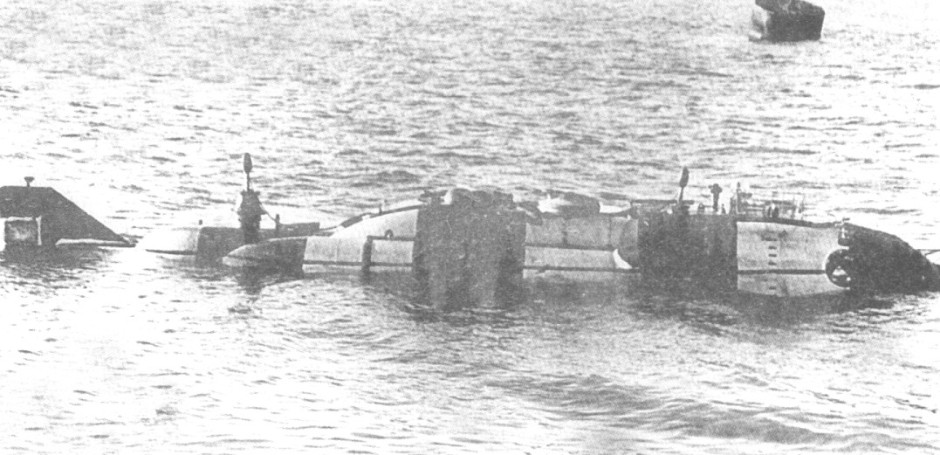
Pr.1839 without sail
Project 1855 'Prize' DSRV
Prize (Приз) was a further improvement of DSRV design, entering service in 1982. They were 13.2 meters long and could dive to 1,000 meters with a range of 21 nautical miles and an autonomy of 120-130 hours.
Project 908 Triton-2 SDV
The 9.5 meter long Triton-2 was a major Swimmer (spetsnaz) delivery vehicle during the1980s. It is loosely equivalent to the USN SEALs' SDV Mk.8, carrying six men over longer distances than previous SDVs. Although it is a wet sub, it is heavily built like a regular submarine to allow a difference in pressure between the water inside and outside the hull, thus eliminating the need for the passengers to decompress before surfacing. The pilot and navigator sat in the bow beneath a small copula with circular portholes, and four passengers satt in two rows facing aft in the stern of the vehicle. Amidships was dominated by the large battery pack. Range was 60 nautical miles and maximum speed 5.5 knots.

Get The essential guide to World Submarines
This Covert Shores Recognition Guide Covers over 80 classes of submarines including all types currently in service with World Navies.Check it out on Amazon
Seliger (Main article)
SKB-170 Seliger was a three-man deep-diving capsule carried under the keel of a specially modified Project 611P ZULU Class diesel-electric submarine, and lowered to the sea floor on a steel cable. The system was home-ported in Kronstadt in the Baltic during the 1980s for deployment in the Baltic, North Atlantic and Mediterranean. The system was designed for submarine communication cable (SCC) intercept and related seabed warfare ‘ocean engineering’.
Track-marks left by the tracked steering device may account for some (but not all) of the Submarine Scare evidence. Activities in the Baltic included training and pre-deployment tests, as well as 'research' and possible covert operations. Seliger was not a Special Forces transport and could not operate in shallow waters however because it was not self-propelled.
MTK-200 Tracked ROV
The MTK-200 was a large unmanned Remotely Operated Vehicle (ROV) from 1987. It was controlled from a surface vessel (hypothetically also from a submarine), and moved along the sea floor on two tracks which each had three electric motors. Operating depth was 500 meters and weight was 3.5 tons. It had two large manipulators capable of pressing 90kg.
The system is known to have been used in the Black Sea and Pacific, and one is now on display at the Patriot Park in Kronstadt. It was used to survey sunken ships and lift objects weighing up to 100 kg. In rescue missions it could be used to connect oxygen hoses to stricken submarines. For this role it was paired with the Sever-2 rescue submersible.
Project 865 LOSOS (Piranha) Class (Main article)
The 28 meter long p.865 'Piranha' midget submarine was a dedicated Spetsnaz special operations craft capable of delivering 6 frogmen to a target over 400 miles from its base. It was designed, built and operated in the Baltic, entering service in the late 1980s although sources vary on dates and success.
Related articles (Full index of popular Covert Shores articles)


 Analysis of Swedish submarine incursion- Luleå 1983
Analysis of Swedish submarine incursion- Luleå 1983

 Yantar spy ship loitering over undersea cables
Yantar spy ship loitering over undersea cables
 Russia seeks submarine advantage in Arctic (HARMONY system, GUGI special mission subs)
Russia seeks submarine advantage in Arctic (HARMONY system, GUGI special mission subs)

 Malachite Arctic Submarine concept
Malachite Arctic Submarine concept

 Swedish A21 Flundran AIP attack submarine
Swedish A21 Flundran AIP attack submarine

 Project 885 'YASEN' (Severodvinsk Class) SSGN. w/Cutaway
Project 885 'YASEN' (Severodvinsk Class) SSGN. w/Cutaway

 A-26 Blekinge Class attack submarine. w/Cutaway
A-26 Blekinge Class attack submarine. w/Cutaway


 Yugoslav X-Craft (R-3E / 911 Class)
Yugoslav X-Craft (R-3E / 911 Class)

 NR-1
NR-1

 Sweden's nuclear powered submarine project (A-11A)
Sweden's nuclear powered submarine project (A-11A)

 USS Parche spy sub par-excellence. w/Cutaway
USS Parche spy sub par-excellence. w/Cutaway

 BS-64 Podmoskovye Special Mission (spy) Host Submarine
BS-64 Podmoskovye Special Mission (spy) Host Submarine

 Soviet Project 1015 'SPLC' Special Purpose midget submarine
Soviet Project 1015 'SPLC' Special Purpose midget submarine

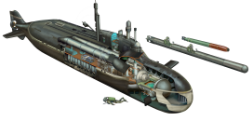 Piranha Class (LOSOS) midget sub. w/Cutaway
Piranha Class (LOSOS) midget sub. w/Cutaway

 Russian X-RAY Class spy sub
Russian X-RAY Class spy sub

